

The Health Inequity of CRT Service and Repair and the Need for Reform
Mike Swinford Chief Executive Officer

Numotion
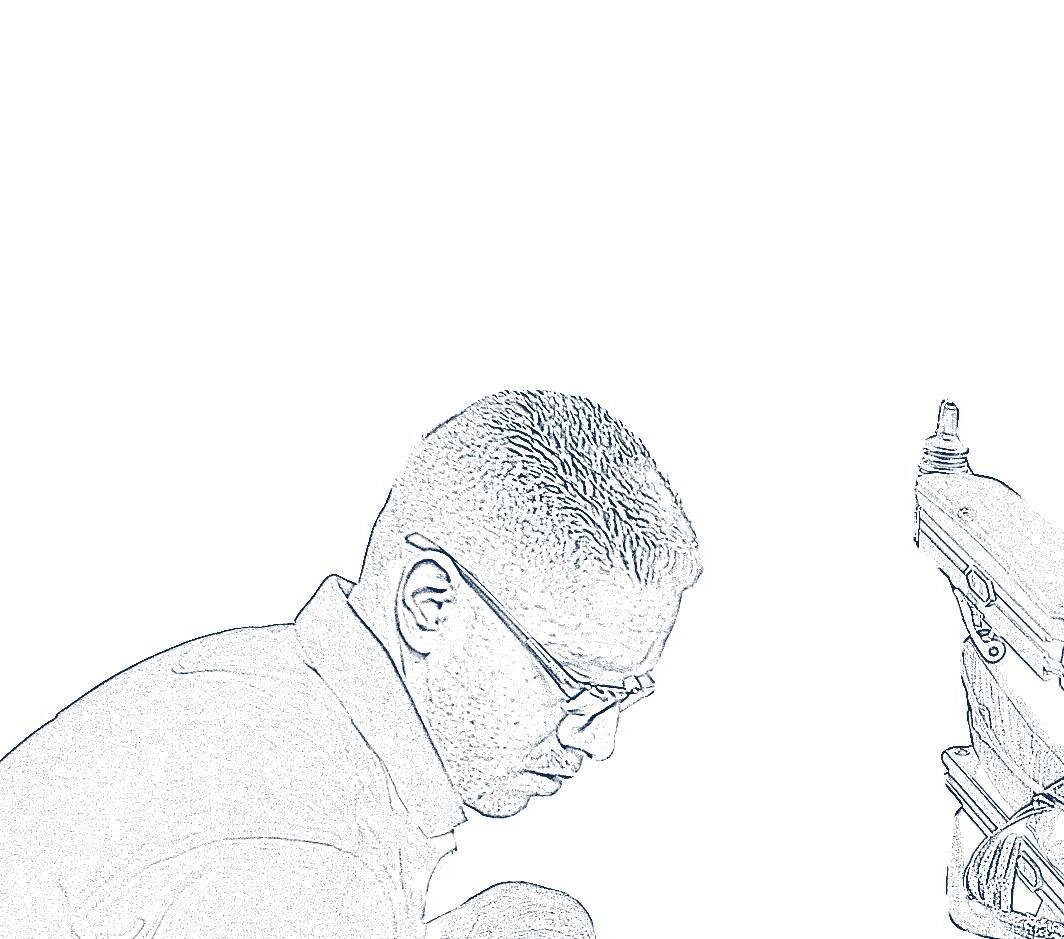
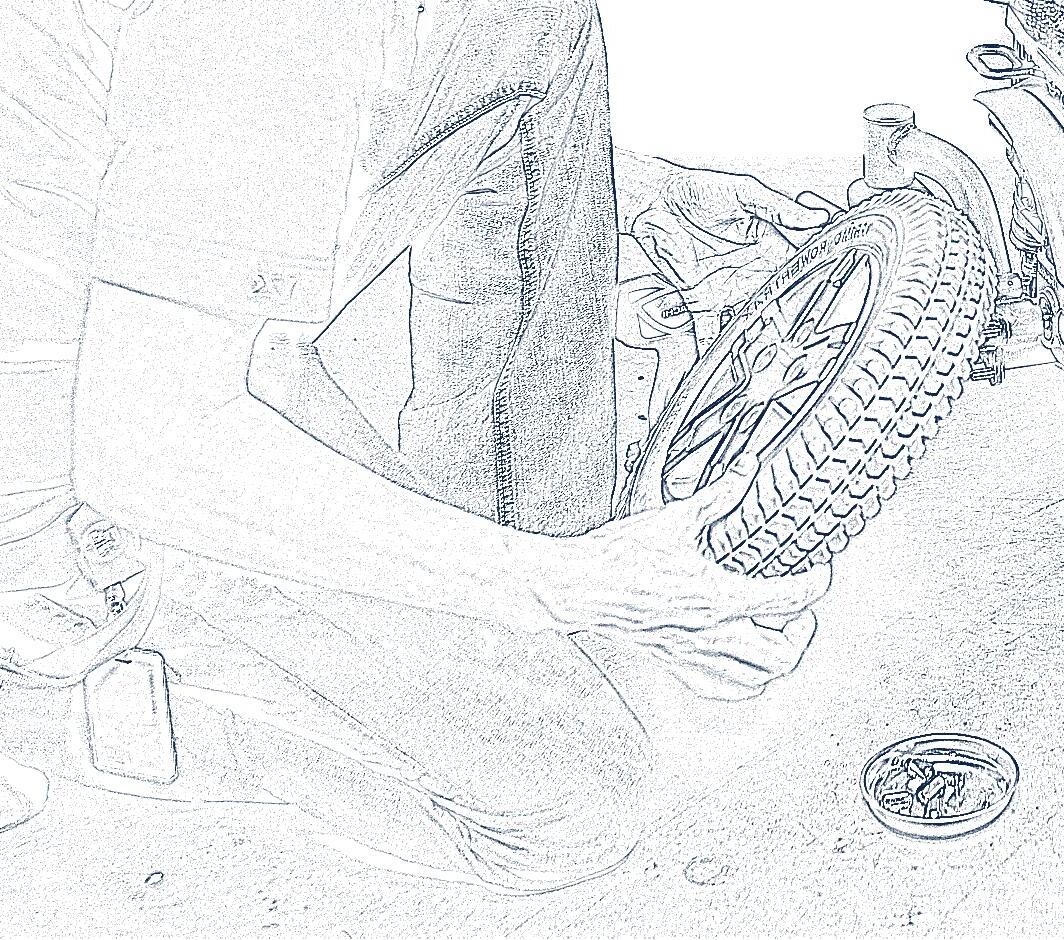
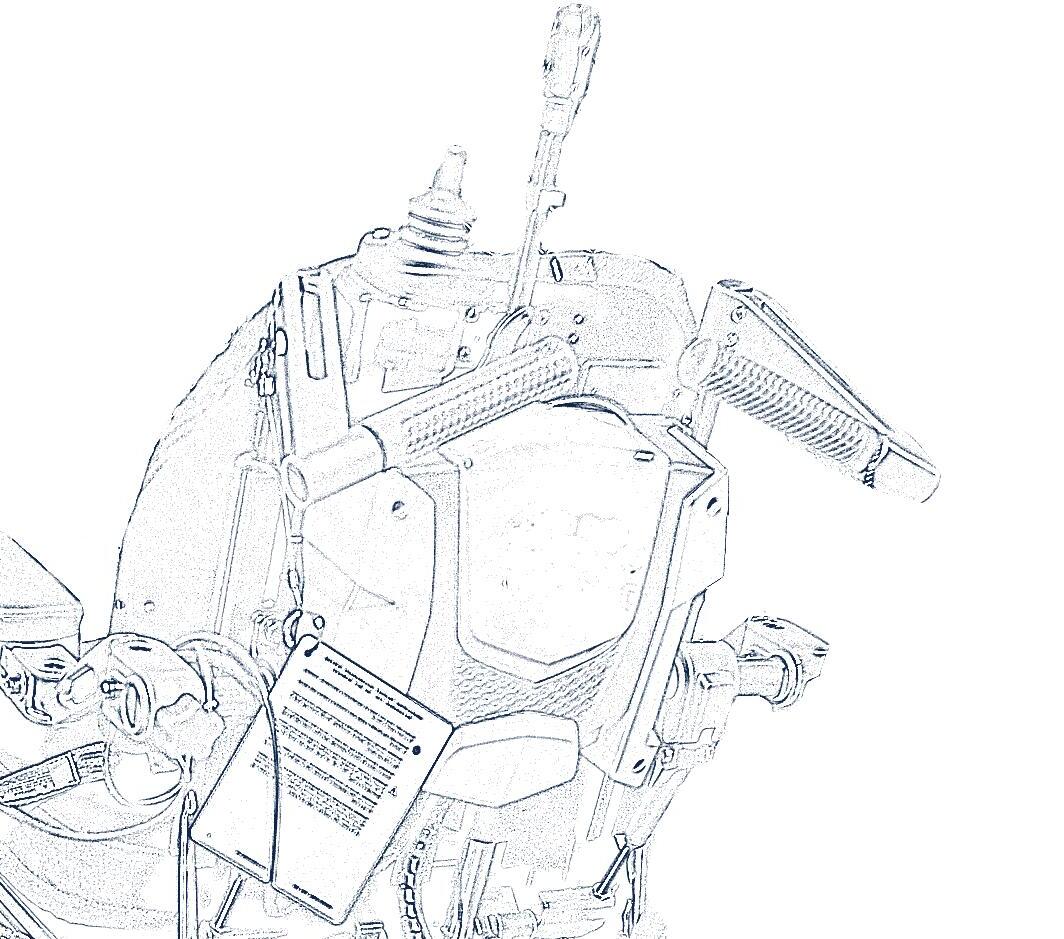
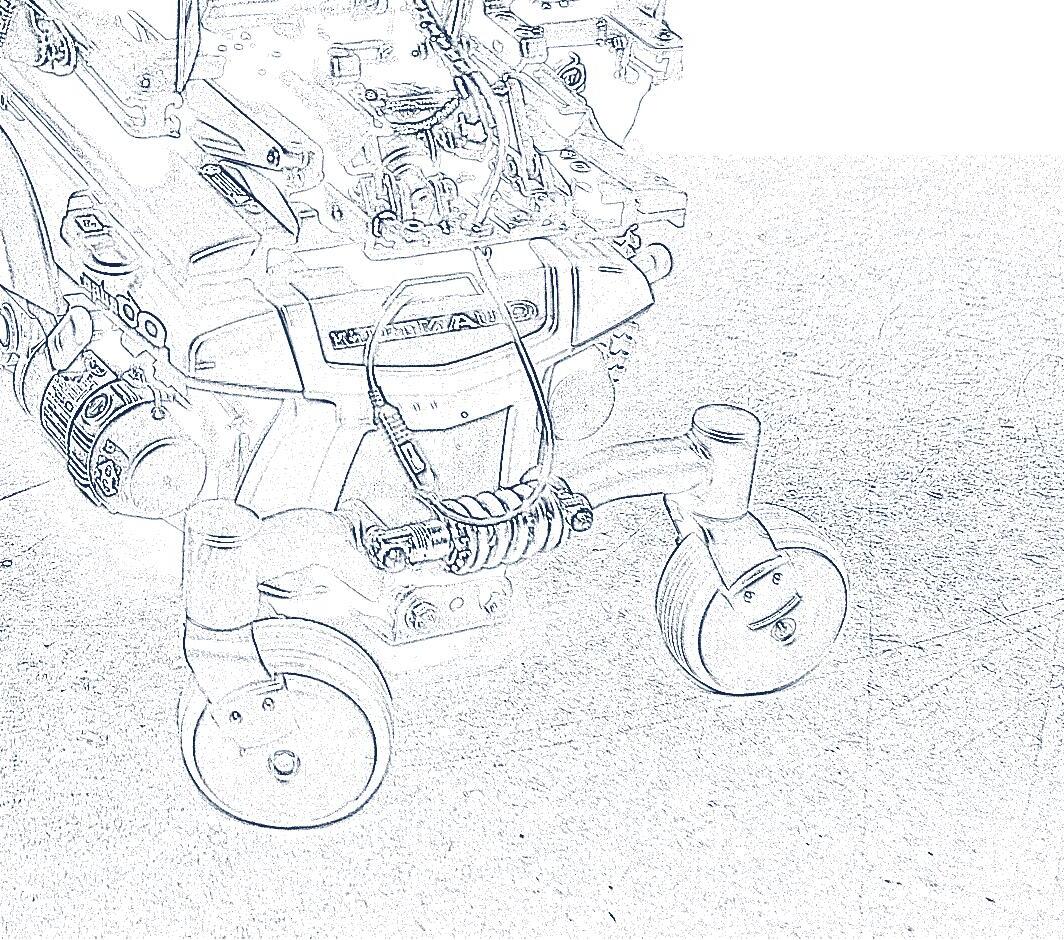
Executive Summary
It is time for the Complex Rehab Technology (CRT) ecosystem for service and repair to fundamentally change. The current model is inadequate and is contributing to a health equity issue for people with disabilities.
Four primary root causes
• Unnecessarily heavy administrative burden
• Reimbursement models for service and repair are insufficient
• No preventative maintenance reimbursement or backup equipment funding
• Disconnect between what new equipment payors reimburse for and how customers use it
Recommendations to address
• Eliminate the need for a prescription and prior authorization for all repairs under $2000
• Reimburse for travel to perform service at customer’s home
• Pay for preventative maintenance for “wear and tear” part replacement or backup parts
• Manufacturers and Payors require CRT equipment providers to service products they provide
• Align consumers and providers on guidelines for simple self-repairs
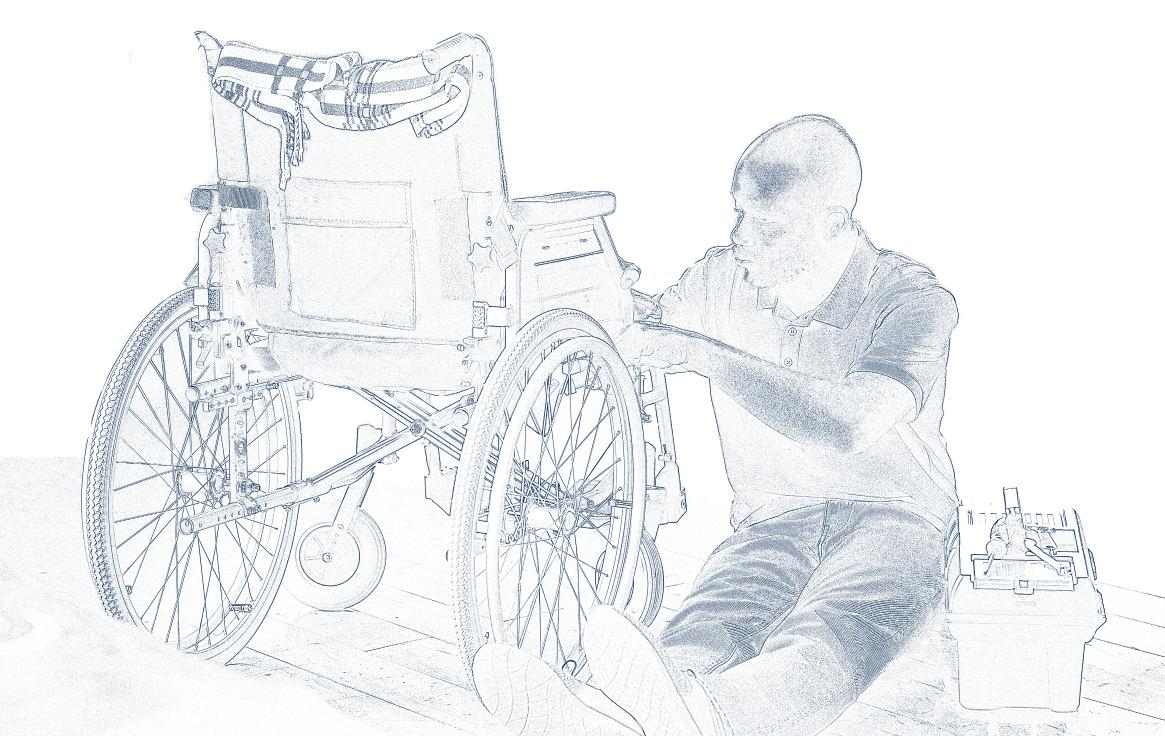
With these changes, we can create a system that provides safe, affordable, and timely service and repair while closing the health equity gap and allowing mobility and independence for those who utilize CRT.
The current model is not working well for anyone. There is a litany of equity, inclusion, and social justice issues that people with disabilities face every day. The fact that the industry-wide model for service and repair in Complex Rehab Technology (CRT) is broken is just one.
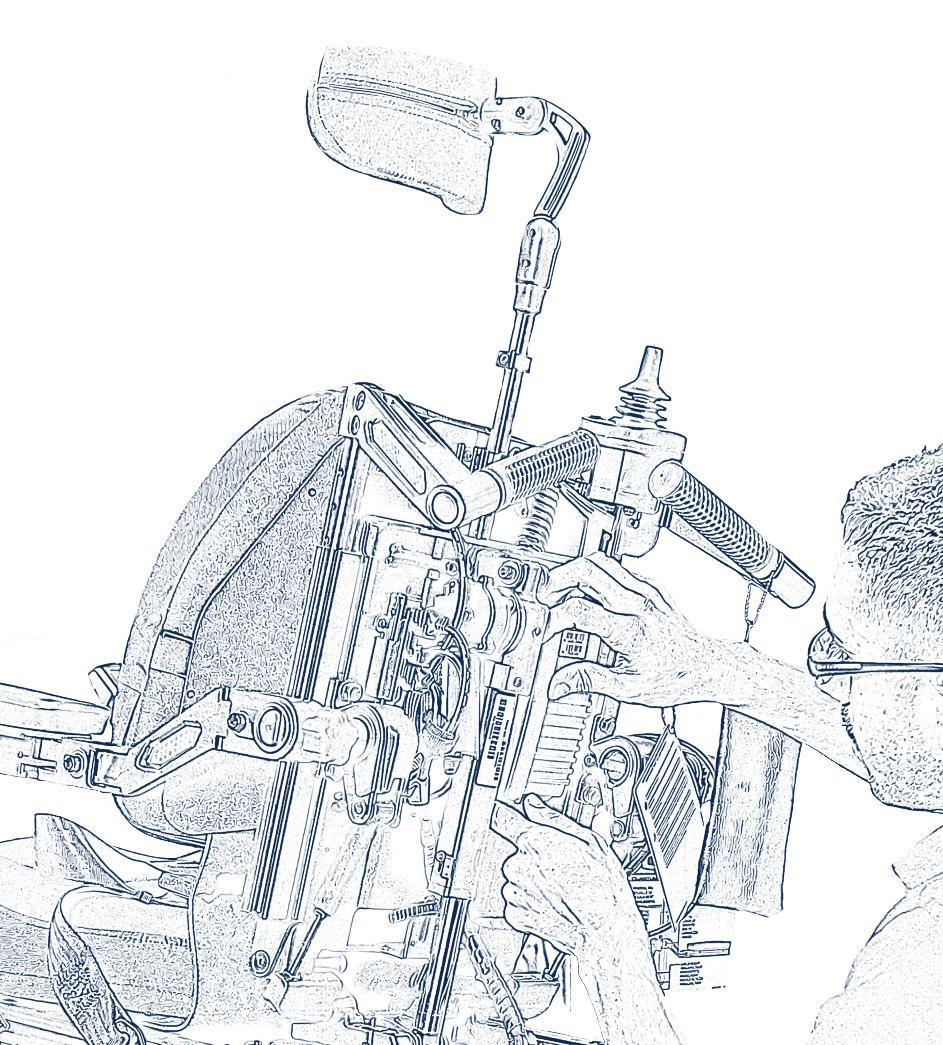
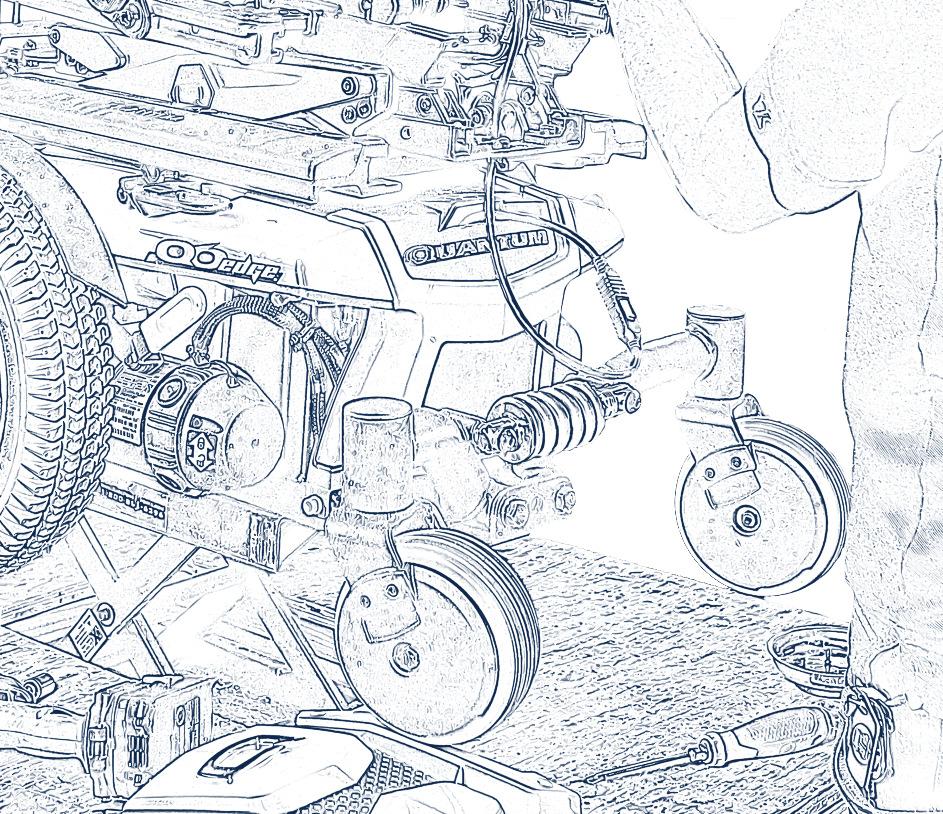
Service and repair in the mobility equipment space is in desperate need of reform at a foundational level. The current model strips persons with disabilities of independence and drives providers to choose not to offer service and repair because of excessive administrative burden and grossly inadequate reimbursement.
The model is failing consumers by disrupting their ordinary daily activities and, in the worst cases, halting their mobility and independence while also potentially creating additional health complications arising from being in broken equipment or poor fitting substitutes while awaiting repairs.
Through our Customer Advisory Board (CAB) we have been discussing the issues of service and repair at length and that dialogue, along with an urgent need across the industry, serves as the impetus for this paper. We know that at Numotion we do not always get it right. We have our share of issues, but we continue to invest time, money, and resources to getting better despite the financial strain service and repair puts on our business. We are committed to driving the change required. We will keep fighting until we close the gap of health equity for the disabled resulting from this antiquated and disconnected model.
Root causes of an ineffective model
How did we get here? There is no singular overall cause, but rather a compilation of long-held standards across the industry that make for an inefficient and ineffective model. While these issues are not new, they are exacer bated of late by high inflation, supply chain issues and labor shortages that only serve to compound the problems and make them more prominent and impactful to the health equity gap faced by people with disabilities. Here are some of the primary drivers.
1.Unnecessarily heavy administrative burden.
Many payors have administrative requirements that delay service for days, and sometimes weeks, before equipment can even begin to be repaired. For many payors, a prescription is required for the repair, even though the medical necessity of the customer’s mobility equipment has long been established and documented when the technology was originally prescribed. In addition, while some payors have responded to our requests, and those of other providers, to eliminate the need for prior authorization on service and repair orders, not all have. Collectively these issues add to the overall timeline of administrative requirements for the service provider and create inherent delays in reviewing these claims by an already overburdened payor workforce.
2.Reimbursement models for service and repair are insufficient.
Reimbursement models fail to account for complex repairs by capping labor, not paying for travel time and infrastructure to provide service in customer’s home, not accounting for expedited delivery fees for critical components, and not adjusting for drastic changes in inflation. Most service and repair businesses, including ours at Numotion, operate at a loss (see Exhibit 1). This is causing service providers to not only limit investments and innovation to provide better service, but also to make difficult decisions whether or not it is even financially viable to offer service and repair at all or offer only limited options. Additionally, under the current reimbursement parameters, companies cannot afford to appropriately invest in the systems and the cash flow required to stock the tremendous amount of custom parts required by the complexity of CRT equipment.
3. No preventative maintenance reimbursement or backup equipment funding.
Batteries are going to need to be replaced at regular intervals. Tires and casters wear out. If these and other similar items are routinely checked during a preventative maintenance event, this can reduce the amount of unplanned disruption for the consumer. Similarly, when there is an unplanned event, having a back-up mobility device allows the consumer to maintain independence while their primary chair/device is being repaired. However, there is no reimbursement for a back-up device. With properly defined parameters and guidelines, each of these issues can lead to a much more positive outcome for the consumer, the service provider, and the payor.
4. Disconnect between what new equipment payors reimburse for and how customers
use it.
Many times, the need for ongoing service and repair for an individual end-user is caused by how they utilize their mobility equipment. There are highly active users who put “many miles” on their chairs and utilize them outdoors and/or for activities that put a strain on the equipment beyond for what it was designed and reimbursed. That is not to say they are abusing the equipment. They are, in fact, living their lives. But they received a type of technology based on a reimbursement model designed to address in-home, or light duty use only, which for the most part is all that payors will cover. Lengthy and costly repairs could be avoided if the initial approved mobility device better matched the actual needs of the given user.
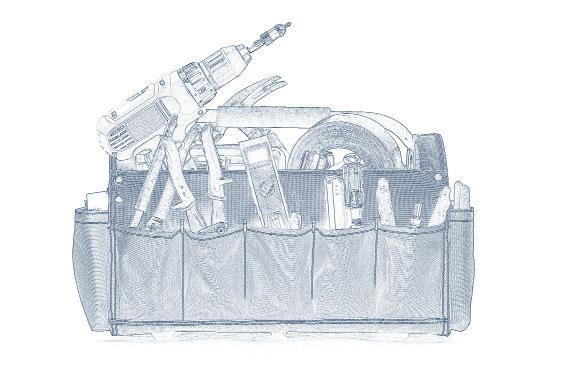
What does reform look like and how do we achieve it? Reforming the model will not be easy. It will take changes in behavior from all stakeholders — payors, providers, and consumers — and will require different policies from payors including CMS.
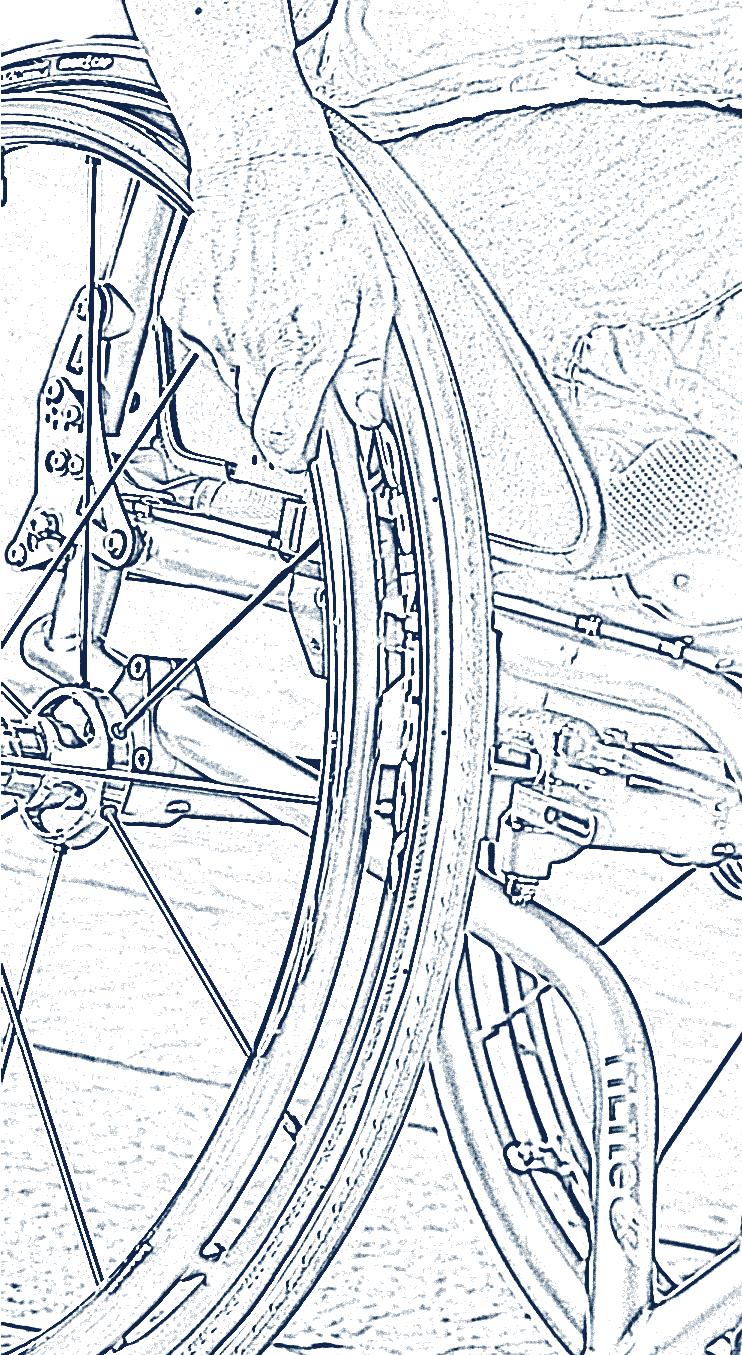
It will not happen overnight. But it is possible, and it is necessary.
Any model we strive for should ensure at least three things: that repairs are (1) safe, (2) affordable, and (3) timely. We can debate how we define each of those, but here is how we believe we should measure those criteria:
(1) Arepairissafewhenaftertheserviceandrepair, thereisconfidencethatthedeviceisrestoredto functioningasintendedforauserwithcomplexneeds.
(2) Arepairisaffordablewhen,asacoveredbenefit, insurancepaysappropriatelytocovercostwitha reasonablemarginORaconsumerfreelychoosesto paycashatareasonableprice.
(3) Arepairistimelywhenitiscompletedquickly, withoutadministrativeburdenorlackofskillgetting intheway,andindividualscanreturntoactivitiesof dailylife.
For every suggestion proposed in this white paper, we have tested against these criteria.
For example, consider two initiatives we have already undertaken with safety, affordability, and timeliness in mind. First, over the last 4 years a dedicated team has been diligently working to partner with payors to eliminate the need for prescription and/or prior authorization for repairs under a negotiated threshold. As a result of these efforts, 75% of the service and repair orders we process today have a significant reduction in the amount of time it takes to resolve those orders. Second, Numotion introduced remote service, which allows people to engage secure video chat with a service technician to determine whether the individual can fix their own chair. This ability for a quick self-fix is what many consumers are asking for and our goal is to deliver a remote fix as often as we can. If the consumer cannot fix it themselves, the remote service technician is often able to diagnose the problem and ensure the in-person service technician has the right parts and tools to complete the job on the first trip. Both advances make service and repair safer and more timely, and they have the potential to make the overall repair model more affordable.
Unfortunately, current supply chain issues have more than wiped out the time reduction from these efforts, but as the supply chain normalizes, we will again see the benefit of these changes. The current model does not provide Numotion with reimbursement for remote service interactions, but we continue to invest millions of dollars annually to provide these resources and technology. These examples demonstrate that change is possible and impactful in providing a better service and repair experience for the consumer.
Here are some other ideas that would help attack the root causes we have laid out and would satisfy one or more of the 3 criteria of safe, affordable, and timely service and repair.
Eliminate the need for a prescription and prior authorization for all repairs under $2000.
Every year thousands of repairs are delayed by as many as 30 days because of these requirements. Removing this would have a significant impact on the overall time to complete the repair and restore the consumer’s mobility and independence.
Pay for preventative maintenance for “wear and tear” part replacement or backup parts.
A model designed to facilitate keeping equipment safe and operational in a proactive vs reactive manner would prevent unexpected and ill-timed repair delays for items like batteries, casters, tires, arm/leg rests and other items that wear from regular use. For the payor this would add little, if any, incremental cost. It would simply shift the cost a bit earlier. However, the positive impact to the consumer would be tremendous. An unplanned service event can be catastrophic. A planned one is far less disruptive and manageable.
Reimburse for travel beyond a reasonable radius of providers location.
It is common that in-home service in most industries comes with a trip-charge or remuneration for the time and expense associated with the convenience of an in-home repair. There is real cost associated with this (see Exhibit 1) that makes providing service and repair in CRT a negative financial impact on the provider.
Not addressing this cost issue will result in more and more service needing to be performed in-shop at providers’ facilities. While this will work for some customers, it will not work for all.
Manufacturers and Payors require CRT equipment providers to service products they provide.
Too many equipment providers are not answering the needs of their customers by providing post sale service and repair. This is unacceptable and resulting in backlogs for those of us who are providing repair services as we are now providing repairs on equipment that we did not originally provide. Manufacturers and Payors could address this by requiring any company that distributes CRT products to offer comprehensive in-home repair services.
Align consumers and providers on guidelines for simple self-repairs.
We believe guidelines for self-repair that align to the safe, affordable, and timely parameters articulated above would be a boost to service reform and a big benefit to the consumer (see Exhibit 2).
Conclusion
This is not a battle Numotion will give up on. True reform is needed and Numotion is prepared to engage in any/all dialogue and actions to drive needed change.
We encourage other service providers and manufacturers to do the same and for individual consumers to also advocate on their own behalf to see the changes referred to in this paper become a reality.
I invite you to read the perspectives of a few members of our Customer Advisory Board below (see exhibit 3). As they have been exposed to the systematic challenges plaguing service and repair in CRT, they have developed a deeper understanding of the issues at hand and how to help address them.
EXHIBIT 1: Breaking down the true cost of Service and Repair
People often comment on the high cost of repairs, and in particular what they consider to be simple repairs are often cited as example of service providers chasing profits. When looking at the cost of a repair, it is important to understand the complete picture. The true cost of a service and repair event is far more than the parts and the labor of the technician who works directly with the consumer. Reimbursement rates for service and repair are a “bundled” rate theoretically intended to cover the cost of the repair. But the reality is that this is not at all the case.
Let’s look at three very common examples of repairs
Part
Labor for actual part replacement
Labor to schedule, verify insurance, process claim, bill
Auto/Fuel expense
Total
Reimbursement amount for part(s) and allowable labor unit(s)
Net loss
While these are just three examples, this is the norm. Given the high volume of service events each year, local service providers have losses in the hundreds of thousands of dollars, regional and national providers can experience millions of dollars in losses annually. This is unsustainable. The reimbursement rates fail to consider the complete and true cost associated with all aspects of providing in-home service and billing a third party payer with all of the requirements necessary to even be paid (inadequately).
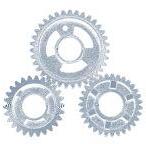
EXHIBIT 2: Why Right to Repair bills as currently being positioned are not the answer for CRT
Right to Repair laws and proposals are targeting many industries such as consumer electronics, automotive devices, and farm machinery. Consumers are calling out for the necessary support from manufacturers and service providers to enable them to do self-repair and modifications on products they own. We are currently experiencing a push for this in some states in the CRT space. While this seems ideal for the consumer on the surface, we believe the current discussions are not getting deep enough into the unique dynamics within CRT and are not creating the right parameters to protect the consumer with safe, timely and affordable service. If these Right to Repair laws are not properly structured, no matter how well intentioned, they could end up making the problem worse.
With respect to safe repairs, current Right to Repair proposals are treating all repairs as the same, when many are not safe to be completed without special training and skills. CRT devices are, by definition, “complex.” Current proposals also ignore the significance that manufacturers have an obligation to report certain events and circumstances to the Food & Drug Administration which regulates the safety and effectiveness of medical devices in the US. Taking service and repairs outside a network of approved providers limits their visibility of safety issues that should result in design improvements and even recalls. Additionally, these proposals fail to address the lack of clinical knowledge for non-certified technicians performing complicated repairs who likely will not have an appropriate understanding of critical clinical aspects.
With respect to affordable repairs, current Right to Repair proposals do not acknowledge the higher costs to the consumer, as repairs not performed by a certified supplier technician will more than likely be cash pay since neither the end-user nor a non-CRT supplier technician is contracted with payors for reimbursement. For complicated repairs this could cost hundreds or even thousands of dollars. Only certified service providers in the CRT space have contracts with the insurance carriers and have the necessary infrastructure and authority to bill Medicare/Medicaid. Another issue often raised in the Right to Repair discussion is that competitive bidding favors the larger companies and is locking out the smaller companies. This is simply not the case. Numotion does not participate in competitive bidding, which is focused more on standard mobility and other Durable Medical Equipment rather than CRT.
With respect to timely repairs, current Right to Repair proposals do not propose any plans to address the fundamental issues that current reimbursement models are laden with bureaucracy, paperwork requirements and waste that adds a significant number of preventable days, and even weeks, to the service and repair cycle. They are ignoring the root causes of delays that have been articulated in this paper. While this may not be an issue for self-repairs, or those done by a third party, current proposals would only be addressing a fraction of the real issue and therefore not having much of an effect.
Numotion is not against the fundamental concept of Right to Repair. We support a more specifically defined approach that addresses these limitations and provides for safe, affordable, and timely service and repair. We believe simple repairs completed by non-certified technicians or the consumer is very appropriate should the consumer choose that path. Simple repairs that can be done safely by most include replacement of arm pads, casters, chargers, upholstery, tubes/tires, like for like cushions, hangers with standard footplate and “grips and tips” such as a joystick knobs or wheel lock tips. We agree there is little reason to have to wade thru the bureaucracy of the current service and reimbursement model for such repairs. These can in fact be completed in a safe, affordable, and timely manner. However, for complex repairs such as actuators, controllers, motors, drive wheels, positioning devices, electronics, custom drive controls, and for some battery replacements we strongly believe these repairs need to be completed by providers specifically trained and experienced in dealing with the clinical and technical complexities of CRT equipment.
EXHIBIT 3: Reflections
We asked a few member of our fifteen person Customer Advisory Board (CAB) to provide their own thoughts on Service and Repair in CRT and what they have learned during the many dialogues the CAB has had on this subject. The CAB meets monthly to discuss a wide range of topics and has spent considerable time in the past year discussing service and repair challenges and the need for reform.
Josh Basile, C4-5 Quadriplegic, Power Wheelchair user
Beingparalyzedbelowmyshouldersforcedmetobecomedependentonothersandtechnologytobothsurviveand thriveinthecommunity.Mywheelchairandallofitsmanycustompartsaffordsmeindependenceandkeepsmy bodysafe.Universally,whensomethingbreaks,awheelchairuserturnstotheirCRTcompanyforhelp.Forthelast decade,IhaveturnedtoNumotionandhavemanystoriesfilledwithbothgoodandbadexperiences.Repairand serviceisrarelyfastenoughespeciallywiththefactthatwhensomethingdoesgowrong,IneeditfixedNOW.When itisnotfixedimmediatelyitiseasytopointtheblameatNumotion.Ihavedonethismanytimesandsohaveothers inthecommunity.Afterhearingfromcountlessofmyfriendswithsadandheartbreakingstories,IletNumotion leadershipknowthatsomethingneededtochange.Itoldtheirleadershipthattheyneedtolistentothecommunity andtheircustomersandtakeproactivestepstodobetter.TheseconversationsledtotheformationofNumotion’s CustomerAdvisoryBoard.
Together,wearelearningfromeachotherandNumotionhasneverbeenshytovoicewheretheyarefallingshort. Havinghealthyconversationshasprovidedanopportunityforusalltolearntogethertocreateabetterjourney forward.Ineverknewaboutthenumerouslayers,steps,anddelaysgoverningeachandeveryrepairandservice inquiry.TheCRTindustryisfunctioningwithinabrokensystemateveryturnrequiringfundamentalchanges.The currentmodelsdonotallowfortimelyrepairandserviceforcingwheelchairusersintothecrossfireandwearethe onesgettinghurt.
Thebestwayforthecurrentproblemstostarttochangeisifwecontinuetoworktogetherasacommunitytohave therightconversations.ThedisabilitycommunityandtheCRTindustrymustjoinforcesalongsideeachothertoform powerinnumbers.Together,wemustcomeupwithandadvocatefordoablechangesimpactingthesystemand modelsgoverningtherulesofserviceandrepair.
Kristi Roher, mother of child with Pelizaeus-Merzbacher disease
CRTisthekeytoindependenceformyson.CRTisthekeytothisworldforachildwhocannotwalkortalk,whois degenerative,anditisCRTthatIrelyontofinduniquewaysforhiscomplicatedbodytoaccesstheworld.When medicineholdsnoanswersforyou…CRThelpedusfindhopeonceagain.Withthatawarenesscomestheanxietyand fearthatoncewegrowoutofthiscarseat,thisbed,thiswheelchair,onceIcannolongercarryyou,whathappens next?JustbecauseCRTexistsdoesnotmakeitscomponentsaccessible.
Complexneedsrequirecomplexcare,complexequipment,andcomplexrepairservices.Themodelofserviceand repairthatmy11-year-oldsonreliesontoattendschool,sitatthedinnertable,orheadtothemovieshasfailedhim morethanonce.Iamaneducatedandorganizedparent,andthefactthatthereisnoforwardplanningtoprevent thesefailuresinCRTismaddening.Hemustwaituntilsomethingcompletelybreakstoberepaired,andthenwe hopethattheservicetechhastheskillsnecessarytofixtheissue.Inaddition,anissuewithsomethinglikea pressure-relievingseatcouldmeanahospitalvisitorevendeathifitcannotbereplacedorrepairedquickly.Imagine thefeelingthatyourchild’sshoeistoosmallandcouldendtheirlife,excepttheshoeishardtofind,expensive,and canonlybeinstalledbyhighlyskilledtechnicians.
ItisevidentthroughmytimeontheNumotionCABandmy11yearsnavigatingtheworldofCRT,allinvolvedparties desirereform.Safe,affordable,andtimelyrepairsarenecessarythatincludeappropriatereimbursementmodelsthat allowforthosewhoareprovidingtheservicetobecompensatedfairly.Thisrequiresswiftactionand resoundingsupportingovernmentandmedicine,aswellasahighlevelofcommunicationbetweenrepresentatives ofeachpartysothatrealandtimelysolutionshappen.
About the Author
Mike Swinford Chief Executive Officer, Numotion
As Numotion’s CEO, not only is Mike responsible for the strategic direction and growth of the company, but he’s extremely passionate about the company’s customers, employees and its mission — improving the lives of people with disabilities by enabling them to actively participate in everyday life.
Mike has been an outspoken leader in working alongside industry leaders, influencers and policy makers, as well as various industry groups and associations to improve healthcare access and inclusion for people with disabilities. He has a passion to influence the betterment of society and uses his role to be an advocate for positive change.
Mike has spent his entire career in the healthcare industry. Prior to joining Numotion in 2014, Mike spent 22 years at the General Electric Company (GE) in the healthcare services sector - his last role as President and CEO of GE Healthcare Services a $5 billion global business unit of GE Healthcare.
Mike is very active with several advocacy initiatives and associations including the ALS Association and the Muscular Dystrophy Association. In 2018 Mike created the Numotion Foundation and serves as its current President. The Numotion Foundation provides grants to other 501(c)3 organizations with common missions to Numotion.
In addition to his advocacy work, Mike serves as a Trustee for the Committee for Economic Development and is a Board Member for CareATC, a technology driven population healthcare provider, as well as Aspen Surgical, a surgical supply company for hospitals and surgery centers.
About Numotion
Numotion is the nation’s largest and leading provider of products and services to help individuals with mobility limitations maximize their health, personal independence, and actively participate in everyday life. The Brentwood, TN based company has more than 150 locations in the U.S. and serves more than 300,000 people annually through a collection of brands. Through Numotion (www.numotion.com) the company works with clinicians and health plans to serve people living with disabilities with prescription-based products including individually configured Complex Rehab Technology (CRT), disposable urological and incontinence supplies, and other assistive technologies. Via CorLife (www.corlifedfe.com) the company serves workers compensation insurance carriers by coordinating a full spectrum of care for injured workers, including all forms of mobility equipment, medical supplies and home health care. With SpinLife, (www.spinlife.com) the company offers consumers online retail access to a wide range of mobility and lifestyle enhancement products designed to provide greater independence in and out of the home.
Mobility and independence start here.
TM
